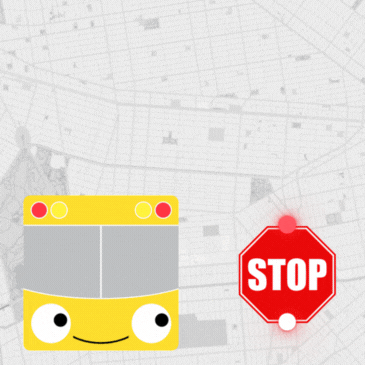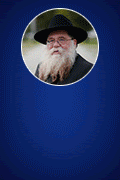Here comes the sun, and Jews around the world are paying attention. According to Jewish tradition, on the morning of April 8, for the first time in 28 years, the sun will be in the exact location it was when the Torah says it was created, 5,769 years ago.
And what does that mean exactly? A solar rite? A celebration? A sun salutation?
Sun worship? Not exactly
Here comes the sun, and Jews around the world are paying attention. According to Jewish tradition, on the morning of April 8, for the first time in 28 years, the sun will be in the exact location it was when the Torah says it was created, 5,769 years ago.
And what does that mean exactly? A solar rite? A celebration? A sun salutation?
Not exactly. All that’s required is a simple blessing called Birkat Hachamah.
But not wanting to waste a moment that comes around only once a generation, Jews across the region and denominational spectrum are gearing up for the event with special sunrise and outdoor services, sun-themed teach-ins, and a range of planned celebrations, many of them environmentally focused.
The prayer, whose origins lie in the Talmud, blesses God, “who makes the work of creation,” and is the same blessing recited over other rare natural phenomena, like lightning or a meteor. April 8 also happens to be the eve of Passover.
What makes it such a big deal, said Rabbi Elazar Teitz of the Jewish Educational Center in Elizabeth, is that it occurs so rarely in a person’s lifetime.
“The thing itself is nothing much. It’s the same blessing we say every time we see thunder [and other natural phenomena]. But the fact that it comes only every 28 years makes it special,” said Teitz.
Unlike many Jewish rituals, this one is based on the solar, rather than the lunar calendar. It occurs every 28 years because of some basic calendar math.
According to Genesis, the sun was created on the fourth of the six days of creation. But because it takes the earth slightly more than a 365-day year to circle the sun, the “anniversary” day keeps shifting, returning to the right Wednesday morning only once every 28 years.
Jewish sages calculated the proper day according to the vernal equinox, when the sun is vertically above a point on the equator. However, they were slightly off in calculating the length of the true solar year. As a result, the spring equinox will take place on March 20, not April 8.
Is Birkat Hachamah sun worship? Absolutely not, said Teitz.
“We’re saying, ‘Thank God for the sun,” he said. But just to make sure, he explained, care is taken not to look at the sun while reciting the blessing, “so we are not accused of sun worship.”
If any doubt is left, he said, he points to the blessing itself, which thanks God for the acts of Genesis.
Early to rise
According to some sources, Birkat Hachamah is supposed to be said in the first three hours of the day. Some local synagogues are taking this to heart and adding a natural component by organizing dawn minyans in natural settings to recite a group Birkat Hachamah. Others are offering ongoing learning opportunities. And some are getting pretty creative.
Early risers can bless the sun in a natural setting when White Meadow Temple in Rockaway holds a sunrise service at the beach at White Meadow Lake followed by the siyum bechorim — the closure of the fast of the firstborn that precedes Passover — and breakfast.
Those who prefer woodland to shorefront can join either Bnai Keshet in Montclair or Congregation Agudath Israel of West Essex in Caldwell, both of whose members will gather in Eagle Rock Reservation. There, the groups will participate in a brief service and a recitation of the blessing.
If you’re not a morning person, try the sundown service at Temple Ner Tamid in Bloomfield on Tuesday, April 7, at 5:45 p.m. (the Jewish day begins the evening before). Participants will sing, pray, and share their thoughts on commitments about green energy, protecting the earth, and the relationship between the earth and God.
To get a little text study in connection with Birkat Hachamah, join the Torah study that will precede Shabbat services the two weeks leading up to April 8 (March 28 and April 4) at Congregation Beth El in South Orange. Participants will study “Massechet Hachamah,” a 68-page guide to classical sources for the blessing put together for this year’s recitation by the Conservative movement and available at the website of the Coalition on the Environment and Jewish Life. The actual blessing will be said at Beth El on the morning of April 8.
Artscroll, a publisher catering to a more traditional audience, has also published a guide for this year’s event.
If you like crowds, you can travel with the local Chai Center of Millburn/Short Hills to Crown Heights in Brooklyn, where tens of thousands of Jews will gather to recite the blessing together.
Local educators are also planning some creative programs. Morristown Jewish Center Beit Yisrael will hold Sun-Day on March 29, when the religious-school students will wear orange and yellow, have a breakfast of sunny-side-up eggs, take part in a short service, and participate in sun-related text study, discussions, and activities.
The area day schools — Solomon Schechter Day School of Essex and Union, Joseph Kushner Hebrew Academy, and the Bohrer-Kaufman Hebrew Academy of Morris County — will join forces on Monday, March 30, at the Aidekman Jewish Community Campus in Whippany for a three-hour sixth-grade powwow on the sun combining science, Judaic studies, and crafts.
It seems that it’s difficult to avoid the obvious relationship between Birkat Hachamah and a heightened awareness of the natural world, regardless of denominational preferences.
“The blessing in and of itself is not a call to consciousness-raising about the environment; it is simply an acknowledgement that God is the Creator of all,” said Cantor Meredith Greenberg of Ner Tamid. Yet, she said, “our generation is finally beginning to understand that we are the keepers of the earth that God has provided for us, and we must care for it like we do our children. This observance is a way to say, in a Jewish context, that we care about the earth, the sun, and the atmosphere and we want as many other people as possible to raise their level of environmental awareness and ethical consciousness.”
Fourteen American-Jewish organizations have banded together to launch BlessTheSun.org, a website with links to educational materials and ideas for April 8 activities. The site asks users to sign a Covenant of Commitment, pledging “to hasten the day of environmental healing, social justice, and sustainable living for all.”
Five of the groups also are sponsoring an art competition for works “interpreting aspects of the sun and exploring the relationship between Judaism and the environment.”
Meanwhile, the fledgling Orthodox environmental group Canfei Nesharim, with leading members in Elizabeth, has devoted a section of its website to Birkat Hachamah, suggesting that the day offers a chance to reflect on “whether we are using the sun’s blessings wisely.”
As Beth El’s Rabbi Francine Roston put it, “At Passover we celebrate the returning warmth of the sun and the new growth of spring, and what better way to raise our consciousness of the importance of nature in our tradition and in our lives than through this ritual and study.”














avrohom
great article
2 things I don’t understand if somebody can clarify it
1) you said takes 28 years for the earth to go around the sun i always thought that according to the torah the sun goes around the earth?
2)there is Cong. that does it on Tuesday at 5.45 p.m i thought the bracha is said on wed.?
anonymouse
wow! thats amazing!
Leon Krayzman
While the moon is conducted by it’s angel the sun is reaching towards it’s inclanation,so it will soon unfold before all your eyes!
#1 ROX!!!
this is the FIRST TIME IN MY LIFE TO DO THIS!!!!(i was born right after pesach 28 yrs ago- around shavuos)
AH
Avrohom,
1. Depends on your point of view, basically. The Rebbe once wrote in a letter (it was published in a Teshura a few years ago, available <a href=http://www.teshura.com/tesh… Sivan 14 5765.pdf>here</i>) that, according to modern science (specifically, the Theory of Relativity), you could say that either the sun revolves around the earth, or the other way around, or that both of them revolve around each other. The classical Torah view is indeed that the sun revolves around the earth; but most schools (Jewish and, lehavdil, non-Jewish) use a simplified explanation that has the earth revolving around the sun, so that’s what the average person is familiar with.
(By the way, the article isn’t saying that it takes 28 years for either one to go around the other, but that it takes 28 years for it to return to the same position at the same time of the day on the same day of the week.)
2. The berachah is indeed supposed to be said Wednesday morning, because the time when the sun is in its original position (the equinox) is at 6:00 PM on Tuesday evening (Jerusalem solar time), and at that time the sun would be setting. I’m guessing, though, that the leadership and members of <u>Temple</u> Ner Tamid aren’t the type to be concerned about that halachic detail.
Milhouse
It’s not an Orthodox shul!